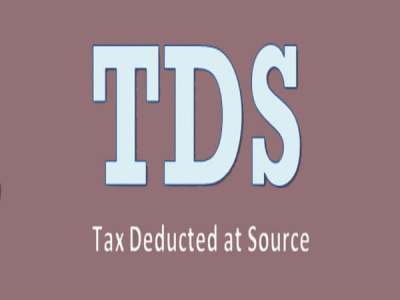Nobody likes to give up or share the gains on their hard-earned investment with the taxman, however, it is obligatory for the taxpayer to do, else the Income Tax Department will track you down and force you to pay up. But did you know there are TDS deducted on your interest income arising from securities like gold bonds, bonds, savings taxable bonds and others. Even debentures issued by a company on stock exchanges, involve TDS which reduces your overall gains. The concept of TDS was introduced with an aim to collect tax from the very source of income. As per this concept, a person (deductor) who is liable to make payment of specified nature to any other person (deductee) shall deduct tax at source and remit the same into the account of the Central Government.
The deductee from whose income tax has been deducted at source would be entitled to get credit of the amount so deducted on the basis of Form 26AS or TDS certificate issued by the deductor.
Hence, if you have invested in any of these securities than make sure to remember the amount of TDS deducted from your interest earned, because IT-department also allows you to claim the deducted amount.
Section 193 of Income Tax Act says:
The person responsible for paying to a resident any income by way of interest on securities shall, at the time of credit of such income to the account of the payee or at the time of payment thereof in cash or by issue of a cheque or draft or by any other mode, whichever is earlier, deduct income-tax at the rates in force on the amount of the interest payable.
The section allows a 10% TDS each to be collected on investments like:
Any debentures or securities for money issued by or on behalf of any local authority or a corporation established by a Central, State or Provincial Act
Any debentures issued by a company where such debentures are listed on a recognised stock exchange in accordance with the Securities Contracts (Regulation) Act, 1956 (42 of 1956) and any rules made thereunder.
Any security of the Central or State Government like 8% Savings (Taxable) Bonds, 2003 and 7.75% Saving (Taxable) Bonds, 2018.
You can claim your TDS!
Step 1 – The data structure (file format) in which the e-TDS return is to be prepared has been notified in https://www.tin-nsdl.com/services/etds-etcs/etds-rpu.html
Step 2 – e-TDS return in accordance with the file formats is to be prepared in clean text ASCII format with ‘txt’ as filename extension. e-TDS return can be prepared using Return Preparation Utility provided by NSDL or any other third party software.
Step 3 – Once the file has been prepared as per the file format, it should be verified using the File Validation Utility (FVU) provided by NSDL
Step 4 – In case file has any errors the FVU will give a report of the errors. Rectify the errors and verify the file again through the FVU.
Step 5 – Generated .fvu file can be submitted at TIN-FC or uploaded at http://incometaxindiaefiling.gov.in/ website
For more updates: Like us on Facebook and follow us on Twitter & Instagram.





































